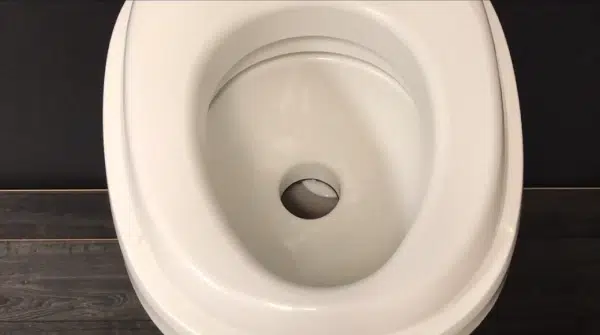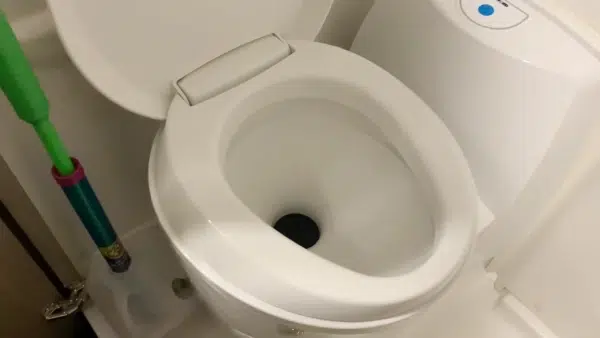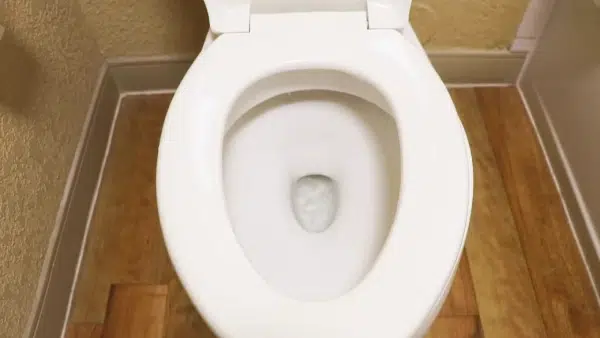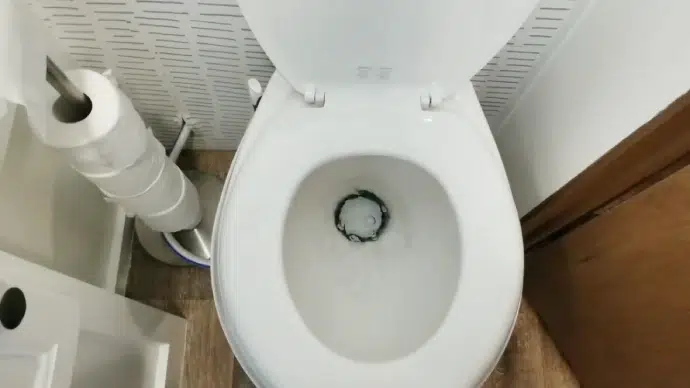Last Updated on April 17, 2023
Water conservation is a hot topic in today’s society, especially regarding water usage in the great outdoors. As an avid RV enthusiast, you may wonder just how much water your trusty toilet consumes per flush.
The amount of water used for flushing a toilet depends on many elements, from the type and mechanisms to design size. While regular toilets can use over 1.6 gallons (6 liters), RV toilets typically require less, between 0.5 to 1 gallon (2 to 4 liters) per flush.
Let’s explore the facts behind this question because we’re excited to share some savvy information that will assist you in cutting down on water utilization while RVing without sacrificing any of your creature comforts.
How Much Water Does An RV Toilet Use Per Flush: Factors That Determines

An RV toilet is an essential component of any recreational vehicle. It allows you to have a comfortable and convenient bathroom experience while on the road. Still, one crucial factor that RV owners must consider is water usage, particularly the flushing time of RV toilets.
Type of Toilet
The amount of water an RV toilet uses per flush varies depending on the type of toilet and its design.
An RV toilet can use between 1 and 5 gallons of water per flush. This may seem like a lot compared to a standard household toilet, which uses around 1.6 gallons per flush, but it’s essential to remember that your RV’s fresh water tank has limited capacity.
Type of Flush Mechanism
The type of flush mechanism used in your RV toilet can significantly impact the water used per flush. There are two main types of flush mechanisms: gravity-fed and pressure-assisted.
Gravity-fed toilets use the force of gravity to move waste through the pipes, while pressure-assisted toilets use air pressure to create a more powerful flush. Pressure-assisted toilets use more water than gravity-fed toilets, so a gravity-fed toilet may be a better option for conserving water.
Size and Design of the Toilet Bowl
The size and design of an RV toilet bowl can significantly impact the amount of water used per flush. Generally, smaller toilet bowls require less water to flush waste than larger ones. Also, the shape of the bowl can affect how efficiently water is used to clear waste.
Some RV toilets have a more elongated bowl shape, allowing for better flushing performance with less water. This means that even if the toilet bowl is larger, it may still use less water per flush than a round-shaped bowl.
It’s important to note that while a smaller bowl may use less water per flush, it may not be as comfortable or practical for all users. Finding a balance between comfort and water conservation is essential when choosing an RV toilet.
Frequency of Use
The frequency at which your RV toilet is used can also impact how much water is used per flush. In general, the more you use your RV toilet, the more water it will require to keep it clean and functioning correctly.
If you are traveling with a large group or family, you may find that your RV toilet is being used frequently throughout the day. In this case, monitoring your water usage is essential and ensuring you don’t run out of water in your tank.
To conserve water, consider using public restrooms whenever possible. This will reduce the water your RV toilet uses and help extend your tank’s life. You can also encourage your group members to use public restrooms or campground facilities when available.
Another way to reduce water usage is by limiting the number of times you flush during each use. For example, if you only need to urinate, there’s no need to flush the toilet with as much water as when you have a bowel movement. Some RV toilets come with a half-flush option for this purpose.
Understanding Your RV’s Water Tank Capacity Due to RV Toilets

One of the most important things to know regarding RV toilet water usage is your RV’s water tank capacity. This is crucial because the amount of available water will directly impact how often you need to refill your tank and how much water you can use per flush.
Your RV’s water tank size can vary depending on your vehicle’s make, model, and year. Some tanks may hold as little as 10 gallons, while others can hold up to 200. It’s essential to know precisely how much water your tank can hold so that you can plan accordingly.
If you have a smaller tank, it’s even more important to be mindful of your water usage. You may need to limit the water you use for flushing to conserve enough for other tasks like cooking and showering.
On the other hand, if you have a larger tank, you may be able to use more water per flush without worrying about running out quickly. Even so, it’s still important to be mindful of your usage so you don’t waste water.
Knowing your RV’s water tank capacity is just one piece of the puzzle regarding conserving water in your RV toilet.
By being aware of how much water you have available and using some simple tips for conservation, like biodegradable toilet paper and low-flow shower heads, you can ensure that you’re making the most out of every drop.
How long should you flush the RV toilet?
Flushing an RV toilet properly is essential for keeping your RV sanitary and odor-free. To ensure that the water in the tank is doing its job, it is important to flush for at least 10 seconds or until the bowl has been emptied.
This time allows enough water to fill the bowl and pass through the pipes to clean out any solid waste particles. Flushing with an adequate amount of water also helps to avoid clogs and buildup in the plumbing system.
Aside from that, it helps control odors as well as stimulates anaerobic bacteria, which break down solids.
Is it OK to flush toilet paper in an RV toilet?
RV toilets are designed to handle RV-safe toilet paper flushing without clogging or other issues. If regular toilet paper is used, there is a much higher chance of experiencing clogs since this type of paper does not dissolve as quickly as RV-safe varieties.
Also, using too much paper can lead to blockages due to insufficient water levels. For best results, use no more than 1 to 2 sheets per flush and always follow with plenty of fresh water to ensure that all waste particles have been processed and eliminated from the system.
How do you know if your RV toilet uses too much water per flush?

Using too much water per flush can cause several problems, such as running out of freshwater faster than usual or filling up wastewater tanks quicker than expected.
It can also affect overall performance by causing weak flushes and allowing solids to remain in the plumbing system leading to odors or even blockages if left unchecked for a prolonged period of time.
To determine if your RV toilet is using more than necessary, keep track of how quickly both tanks are filling up while on trips. If either one seems alarmingly low, then there may be a problem with your flushing habits.
Aside from that, watch where you place your hand when flushing. If you feel a significant force when pushing down, your unit could use too much water per flush.
Smart Water Conservation Tips for Responsible RVers
Understanding the water usage of your RV toilet is crucial for any responsible RVer. By knowing how much water your toilet uses per flush, you can better manage your freshwater tank and avoid running out of water during your trip.
Factors such as the type of flush mechanism, design and size of the toilet bowl, and frequency of use all play a role in determining how much water your RV toilet will use per flush.
By conserving water, such as using biodegradable toilet paper, switching to low-flow showerheads or faucet aerators, and taking shorter showers while turning off the water when not in use, you can save precious water resources and prolong your time on the road.
Ultimately, being mindful of your RV’s fresh water tank capacity and taking steps to conserve water will ensure a more enjoyable and stress-free camping experience. So next time you hit the open road in your RV, remember these tips for responsible and sustainable travel. Happy trails.



